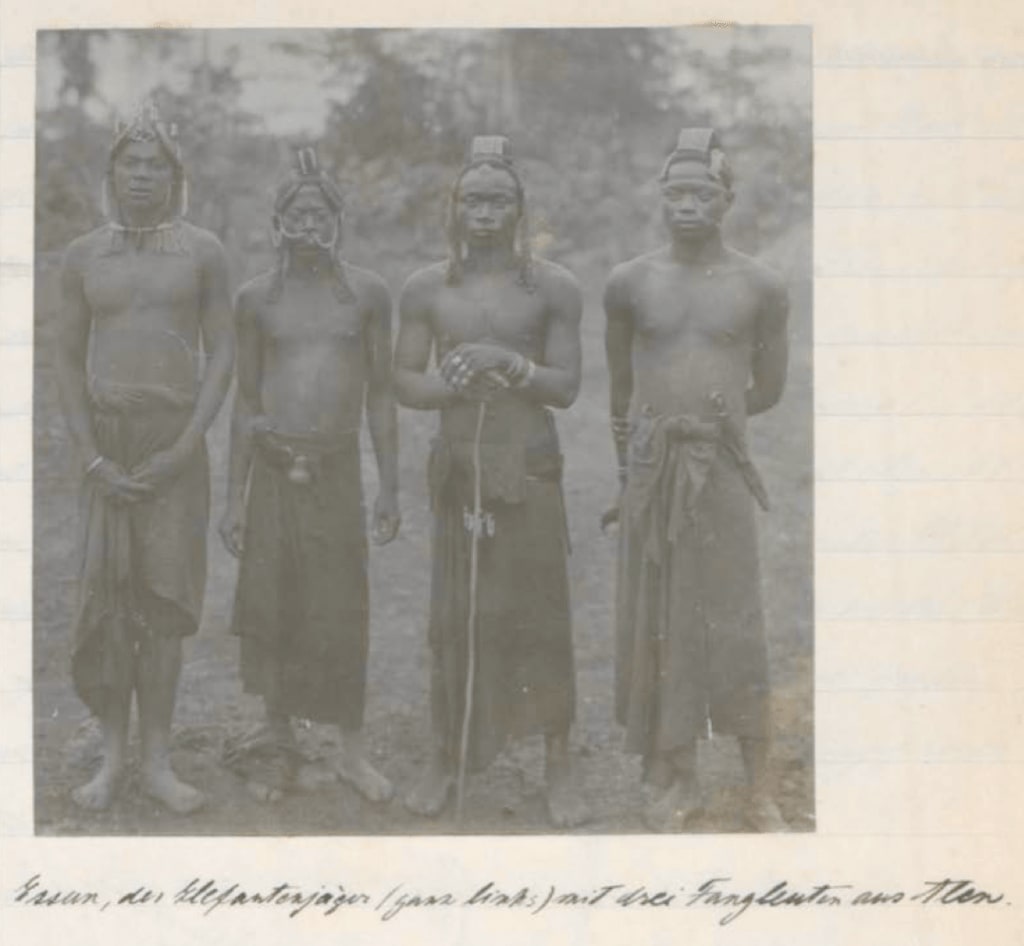
The German Günther Tessmann was one of the first to seriously study the Fang, resulting in his magnus opus Die Pangwefrom 1913. Although he was not a trained anthropologist, he nevertheless may be considered one of the pioneers of ethnographic field research. The Museum of Lübeck recently has digitalized his handwritten memoirs. You can read them – especially band 2 and 3 are of interest; they are of course written in German. More bands are following later this year. All the objects that Tessmann donated to the Ethnological Collections of the City of Lübeck unfortunately still aren’t available online.
Günter Tessmann was born in Lübeck in 1884. After finishing school he did an apprenticeship on tropical gardening at the colonial school in Witzenhausen. Eventually Tessman went to Cameron and Spanish-Guinea (now: Equatorial Guinea), where he did botanical and zoological research. Moreover, Tessman developed a growing interest in Anthropology and began to collect ethnographic material and data. Between 1907 and 1909 Tessman conducted field research in Cameron and Spanish-Guinea on behalf of his hometown Lübeck, to which he donated his complete ethnographic collection (now: Ethnological Collection of the City of Lübeck). Tessmann furthermore published a two-volume monograph on the Pangwe (Fang) people in 1913, including many aspects of their culture, history, religion and arts. Due to the success of his work, he started another field research the same year, this time in Eastern Cameron on behalf of the German Colonial Department. Due to the difficult circumstances during World War I Tessmann had to interrupt his field work several times. After 1918 he more and more shifted his focus on South America. Between 1921 and 1926 he did a number of researches on the ethnic groups in Peru. After his return to Germany completed his doctorate in 1928. In 1923 Tessman had published another monograph, this time on the Bubi people. This publications was followed by his work on the different people and languages of Cameron in 1932, his monograph on the Bafia in 1934 and his two-volume monograph on the Baja people in 1934/37. Tessmann´s intense long term stationary field work was at high standard for his time. After the Nazi regime banned him from teaching at the university in Halle, Tessmann migrated to Brazil in 1936. There he worked as a botanist at the Museu Paranaense and the Instituto de Biologia in Curitiba. Tessmann retired in 1958. Günter Tessmann died in Curibita in 1969.
UPDATE: a reader informed me that while Tessmann’s Pangwe book sells for more than € 1,000 these days, one can buy a fascimile for € 146 here (vol. 1) & here(vol. 2).